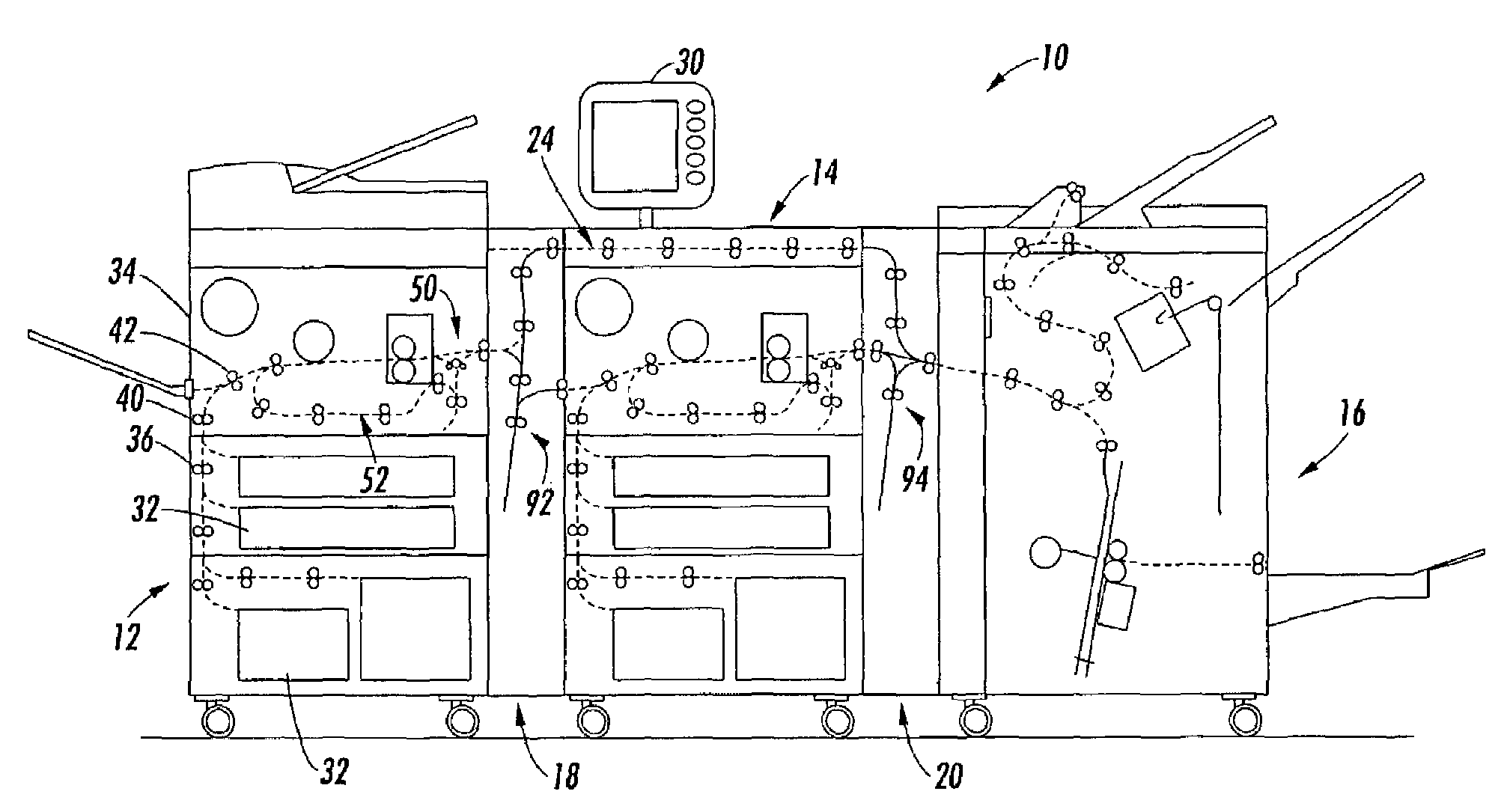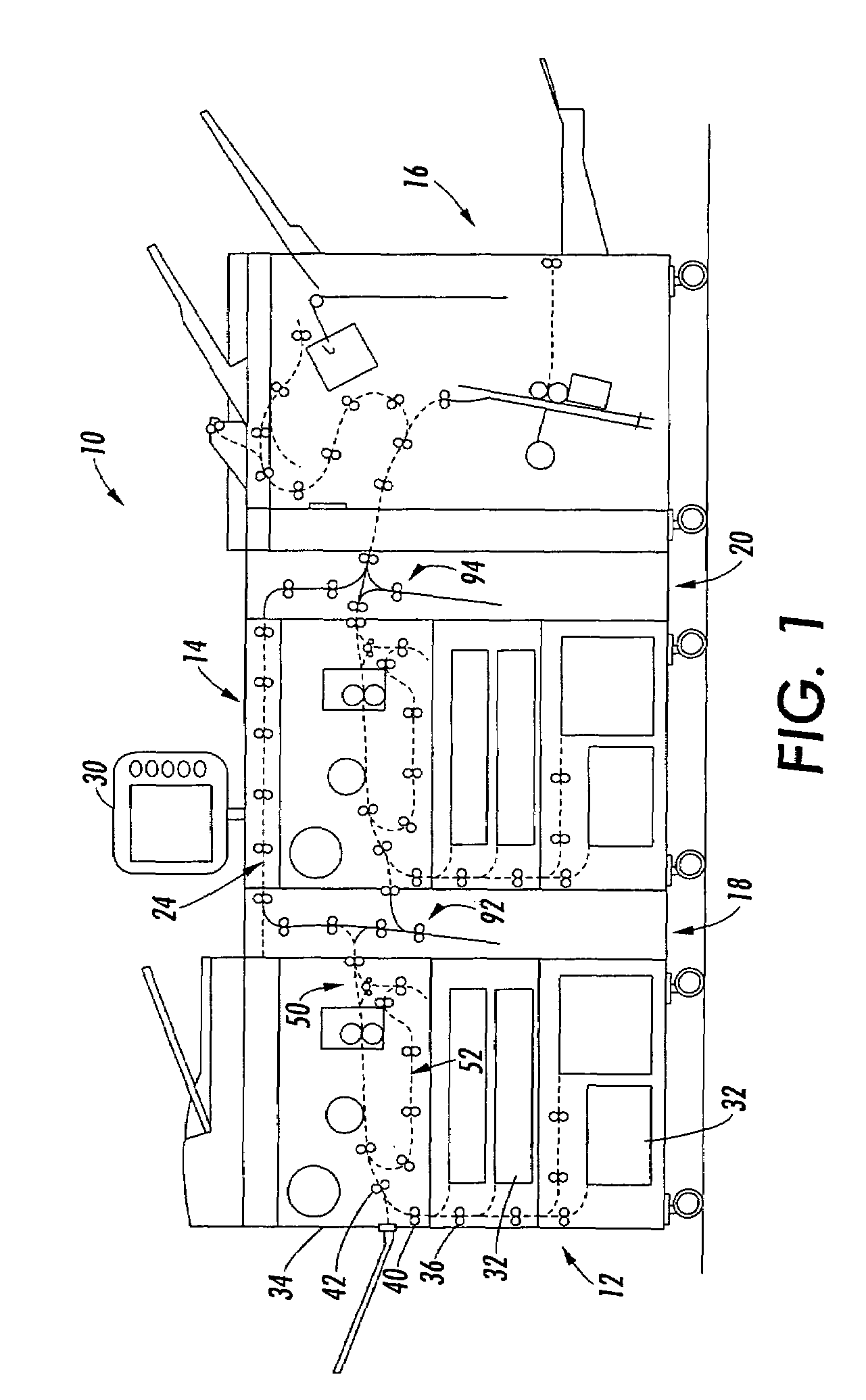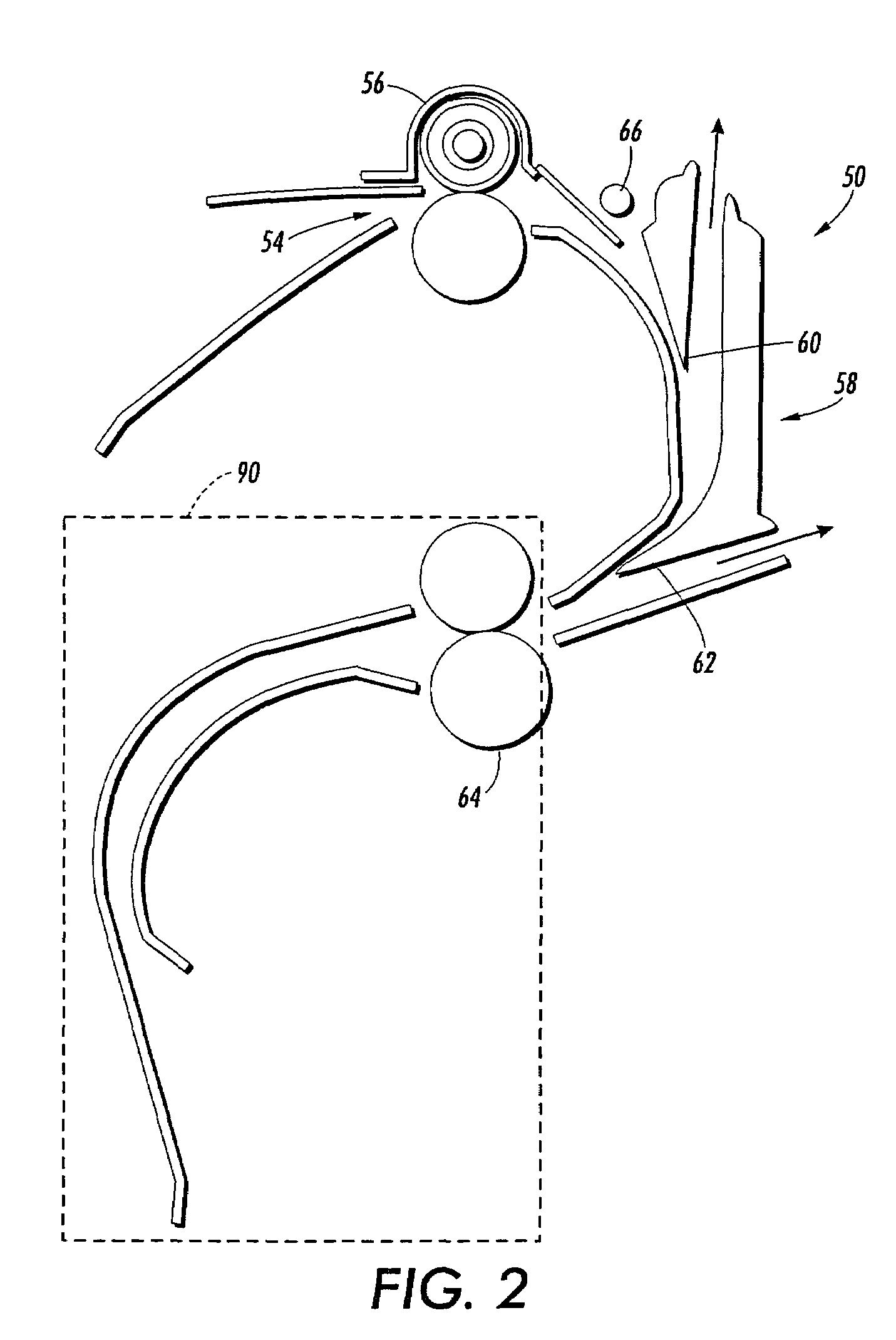Printing system with inverter disposed for media velocity buffering and registration
a technology of inverter and media, which is applied in the direction of electrographic process apparatus, instruments, optics, etc., can solve the problems of inversely affecting machine size and paper path reliability, and requiring a relatively long and expensive upstream paper handling path. achieve the effect of effective completion, enhance document control, and enhance efficiency
- Summary
- Abstract
- Description
- Claims
- Application Information
AI Technical Summary
Benefits of technology
Problems solved by technology
Method used
Image
Examples
Embodiment Construction
[0018]With reference to the drawings wherein the showings are for purposes of illustrating alternative embodiments and not for limiting same, FIG. 1 shows a schematic view of a printing system comprising a plurality of marking engines associated for tightly integrated parallel printing of documents within the system. More particularly, printing system 10 is illustrated as including primary elements comprising a first marking engine 12, a second marking engine 14 and a finisher assembly 16. Connecting these three elements are three transport assemblies 18, 24 and 20. The document outputs of the first marking engine 12 can be directed either up and over the second marking engine 14 through horizontal by-pass path 24 and then to the finisher 16. Alternatively, where a document is to duplexed printed, the first vertical transport 18 can transport a document to the second marking engine 14 for duplex printing. The details of practicing parallel simplex printing and duplex printing throug...
PUM
 Login to View More
Login to View More Abstract
Description
Claims
Application Information
 Login to View More
Login to View More - R&D
- Intellectual Property
- Life Sciences
- Materials
- Tech Scout
- Unparalleled Data Quality
- Higher Quality Content
- 60% Fewer Hallucinations
Browse by: Latest US Patents, China's latest patents, Technical Efficacy Thesaurus, Application Domain, Technology Topic, Popular Technical Reports.
© 2025 PatSnap. All rights reserved.Legal|Privacy policy|Modern Slavery Act Transparency Statement|Sitemap|About US| Contact US: help@patsnap.com



